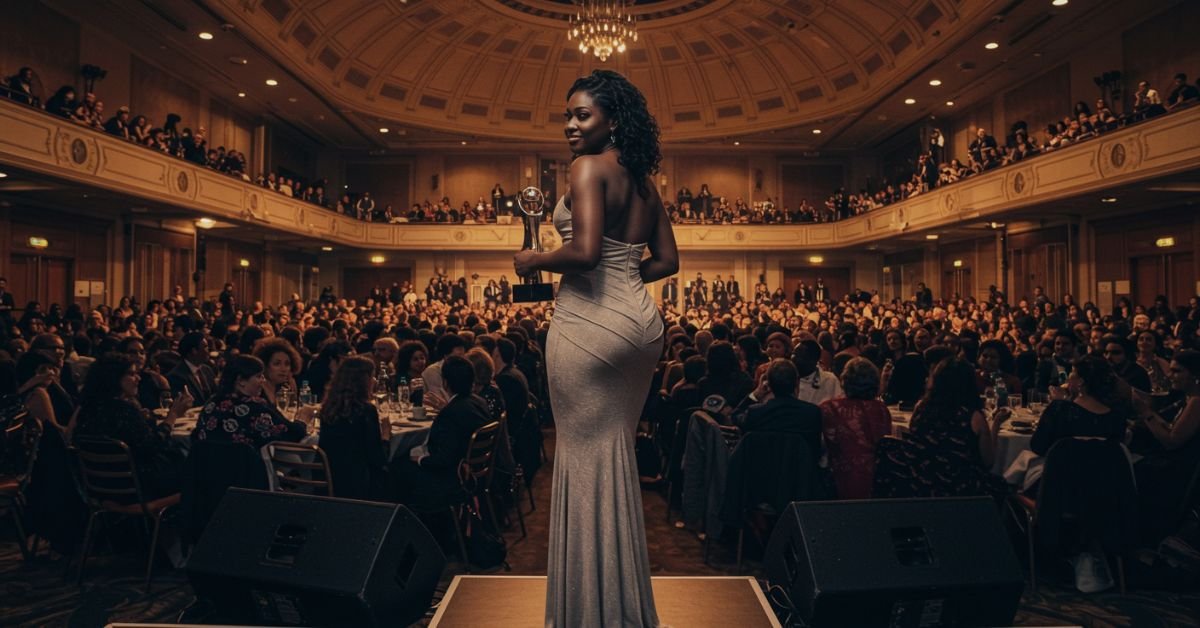Contents
Introduction to the Unusual Award
Awards typically celebrate talent, achievement, or groundbreaking innovation. But what if there was an award dedicated to something as unexpected as extreme gluteal proportions? Welcome to the Unusual Award n.13—a recognition that shines a light on unique body features and cultural expressions.
In many cultures around the globe, physical attributes such as these tell stories of beauty standards and personal identity. This particular award highlights the exceptional gluteal proportions found in African women, showcasing not only their individual journeys but also the rich tapestry of cultural significance attached to such traits.
Join us as we delve into this fascinating topic and explore how perceptions of beauty evolve across different landscapes—both geographical and societal. The world is full of surprises, so let’s take a closer look at this unusual yet captivating celebration!
What is Extreme Gluteal Proportions?
Extreme gluteal proportions refer to a body type characterized by notably pronounced curves in the buttocks. This aesthetic has gained attention for its striking visual impact and, at times, controversial nature.
Such proportions can vary widely among individuals. They often defy conventional beauty standards prevalent in many cultures. Instead, they celebrate a more voluptuous figure that emphasizes femininity.
This trend is not just about appearance; it reflects a deeper appreciation of the human form’s diversity. In some communities, these traits are synonymous with health and vitality.
Increasingly popularized through social media and celebrity culture, extreme gluteal proportions challenge traditional narratives around beauty. The fascination with this body type continues to spark discussions on identity and self-expression across various platforms.
The Cultural Significance of Gluteal Proportions in African Women
In many African cultures, body shape holds deep-rooted significance. Gluteal proportions are often celebrated as symbols of fertility and health.
Women with pronounced curves have long been admired for their perceived ability to bear children and nurture families. These features can reflect strength and resilience within various communities.
Artistic expressions, from traditional sculpture to contemporary fashion, frequently highlight these attributes. They serve as a canvas for showcasing cultural pride.
Social gatherings often amplify the appreciation of such physical traits through dance and celebration. Movement itself becomes an expression of identity and beauty.
Despite modern influences that may challenge these ideals, traditions remain strong in numerous regions across the continent. The narrative surrounding gluteal proportions continues to evolve while embodying history and heritage in vibrant ways.
Controversy Surrounding the Unusual Award Category
The Unusual Award for extreme gluteal proportions has sparked considerable debate. Critics argue that it objectifies women, reducing them to mere physical attributes rather than celebrating their full humanity.
Some view the award as a celebration of natural beauty and diversity. Others see it as perpetuating unrealistic standards, even within cultures that embrace curvier shapes.
Social media amplifies opinions on both sides. Supporters often share empowering messages about body positivity and self-acceptance. Detractors raise concerns about the potential harm this focus can inflict on young girls striving for validation based solely on appearance.
Furthermore, cultural perspectives play a significant role in shaping reactions to the award. What one group sees as an accolade, another may perceive as an endorsement of superficial values. This dichotomy highlights the complexity surrounding body image discussions in different societies.
Previous Winners and their Reactions
Previous winners of the unusual award for extreme gluteal proportions have had varied reactions to their recognition. For some, it serves as a badge of honor that celebrates their bodies and heritage. They embrace the spotlight, using it to advocate for body diversity.
One winner expressed pride in her curves, saying they represent strength and beauty in African culture. Social media became a platform for sharing her journey and inspiring others.
However, not everyone feels positively about this accolade. Some past recipients voiced discomfort with being objectified or reduced to physical traits alone. They argue that such awards can perpetuate stereotypes rather than uplift women.
There is a mix of empowerment and concern among these individuals. Each story sheds light on personal experiences shaped by societal expectations surrounding body image and femininity.
Body Positivity and Acceptance in Different Cultures
Body positivity varies widely across cultures. In some societies, fuller figures are celebrated as symbols of wealth and fertility. These communities often view larger body types as beautiful.
In contrast, other cultures emphasize slimness, associating it with health and success. This can lead to tension between traditional ideals and modern influences.
Social media has transformed perceptions globally. Influencers challenge conventional beauty standards by showcasing diverse body types. Acceptance is growing, but challenges remain.
Some regions struggle with rigid beauty norms that can harm mental health. Education about self-love is crucial in these areas to foster a more inclusive mindset.
Art also plays a significant role in shaping cultural attitudes toward bodies. Artists express love for all forms through their work, promoting acceptance at every size.
The journey towards embracing diversity continues to evolve around the world, reflecting changing values and increasing awareness.
Conclusion:
The concept of extreme gluteal proportions in African women highlights a fascinating intersection of culture, beauty standards, and societal perceptions. This unusual award not only celebrates the physical attributes that have gained prominence but also serves as a platform for dialogue about body image across different cultures.
It’s essential to recognize the diverse meanings attached to body shapes and sizes in various societies. While some may view these proportions as mere anomalies deserving of an award, others see them as embodiments of cultural pride and identity.
As conversations around body positivity continue to evolve globally, acknowledging such distinctions is invaluable. The journey toward acceptance—whether it’s embracing one’s own body or appreciating another’s—is ongoing.
Understanding this complexity invites us all to reflect on our own definitions of beauty while respecting the rich tapestry found within different cultures around the world. Each story shared through platforms like these contributes meaningfully to reshaping narratives surrounding bodies beyond conventional norms.

